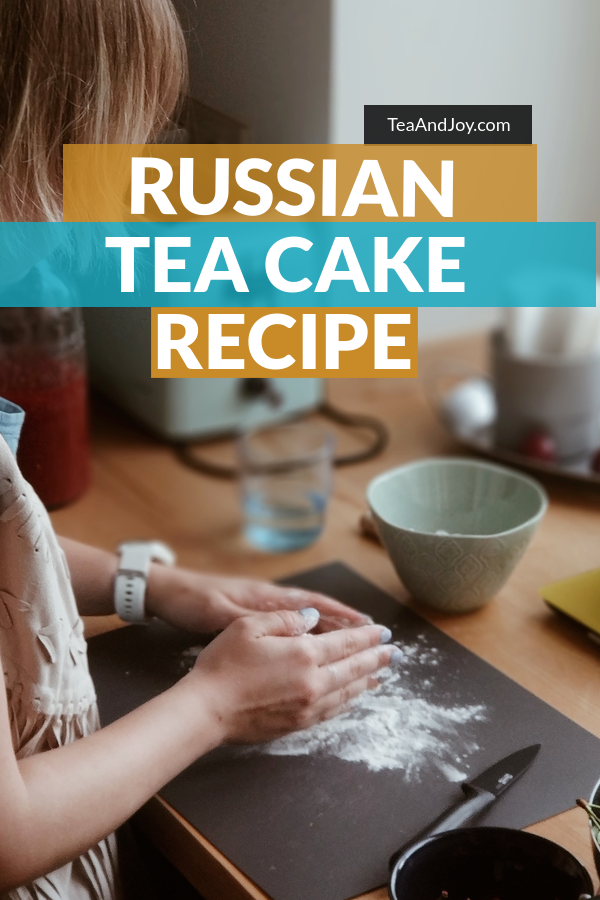Looking for a Russian tea cake recipe? Here’s one we love!
You might know them as snowballs in the US, but did you know that they are also called Mexican wedding cakes? While we’re listing out aliases, they are also called Italian butternuts, Viennese sugar balls and southern pecan butterballs.
What are they?
They’re Russian Tea Cakes!
In this article you'll find:
What is a Russian tea cake?
No matter where they’re from, or what they look like–cookies, cake pops, donut holes…the list goes on– Russian tea cakes refer to one dish: melt-in-your-mouth butter or shortbread cookies that are sprinkled—generously—with powdered sugar.
So why are they called Russian tea cakes, when they’re actually cookies?
To be perfectly honest, there’s a little grey area around this. No one really knows exactly why they’re called Russian tea cakes. The word is that it originated somewhere in Europe, and from there they migrated to different parts of the world because of Russian nuns, when they too, migrated there.
Another link to Russia is that these tea-cake-slash-cookies were served beside Russian samovars or tea urns, ergo the name. Depending on where you get them, the recipe will change and evolve but at the heart of it all is soft, buttery goodness.
So how do you make them? Fret not, because I have the basic recipe right here.
Russian Tea Cake Recipe
Ingredients
Here’s a list of everything you’ll need to get started.
- One cup or 225g of butter, softened.
- Half a cup or 60g of powdered sugar to mix into the dough and another half a cup to sprinkle on top(or roll your cookies in, whichever you prefer.)
- One teaspoon of vanilla essence or extract.
- Two and a quarter cups or 295g of all-purpose flour, sifted.
- A quarter teaspoon of salt. I usually add this to my flour right away.
- *A handful of nuts of your choice (chopped, preferably).
Method
- Start off by grabbing a big mixing bowl and add your butter in there. Beat in the half-cup of powdered sugar, and then the vanilla extract, till you have a smooth mixture. Then pour in your flour-salt, that you whisk or beat in until a nice dough comes together.
- Don’t forget to add your choice of nuts!
- Once you have your dough, scoop or pinch off small portions and use your palms to roll them into balls. They can be an inch or an inch and a half wide in size. They’re meant to be bite-sized so keep the dough balls small.
- I can’t stress this enough, but your dough has to be refrigerated for over an hour or until it becomes firm. Do not skip this step. Trust me, it makes a whale of a difference if you pop them into the refrigerator to allow the dough to set.
- Preheat your oven to 375°F or 190°C. Line your cookie tray with parchment paper or a silicone baking mat.
- Place your dough balls on the cookie sheet. Leave 1-2 inch gaps between each ball. Pop the tray into your preheated oven and bake for 10-12 minutes. I like to keep an eye on the bottom of the cookies, and take them out when the edges start to turn that lovely, buttery gold.
- Here’s a tip: halfway through, slip on a couple of oven mitts and rotate your cookie tray front to back. This will help your cookies to bake evenly.
- Once you remove the tray from the oven (don’t forget the oven mitts!) let the cookies rest on a cooling rack and allow them to cool down.
- In the meantime, get out the other half cup of powdered sugar and add them to another bowl. Once your cookies have cooled down, roll each of them in the sugar—one at a time, don’t toss them in together or the sugar will clump
- If you notice that the sugar is melting a little, don’t worry. Just wait for the cookies to cool down all the way through before you roll them again in the sugar. You’ll want that beautiful, snowy coating around them, so patience, grasshopper.
This recipe should yield a couple dozen cookies, unless you snuck in a few spoons of the cookie dough.
Anything else you need to know?
So, we’ve got the Russian tea cake recipe down pat. Now here’s a little more for you to remember when you’re baking them.
- When you’re choosing your butter, if you use the salted kind, then you don’t need to add that extra quarter teaspoon of salt mentioned in the ingredients. Now, remember, these cookies are, in essence, butter cookies. So I’d recommend that you use good quality butter.
- The same goes for the vanilla extract. If you’re using essence or extract, look for ones labelled ‘pure.’ They’re expensive, yes, but well worth the investment when you get a delicious batch of cookies out of it.
- *Pecan is a popular choice of nuts in Russian tea cakes, right along with hazelnuts, almonds and walnuts. I like to stick to one kind, and not mix in two varieties as it takes away the simple nutty flavor of butter cookies. You can also consider toasting the nuts a little before you toss them in. I’d avoid the glazed, candied or salted nuts as they alter the flavor of these Russian ‘tea cakes.’
- After you’ve mixed in your flour, if you feel like your dough is a little too crumbly for your liking, just go ahead and add a splash of milk. If you’re wondering just how much of a splash, remember, you need just enough to get that perfect moist-factor in your dough, not to make it a batter, capisce?
- Now, for those of you who are allergic to nuts, Russian tea cakes, while traditionally do include nuts,can be tweaked to suit your dietary requirements. You can use little bits of hard candy, raisins or chopped up, dried apricots. A Russian tea cake is a very Christmas-sy desert, so go ahead and add what makes you think of Christmas, as long as it isn’t mistletoe or an entire candy cane.
References
1) https://www.allrecipes.com/recipe/10192/russian-tea-cakes-i/
2) https://www.bettycrocker.com/recipes/russian-tea-cakes/3af8664b-6c3e-4022-b686-cd961521e59b




